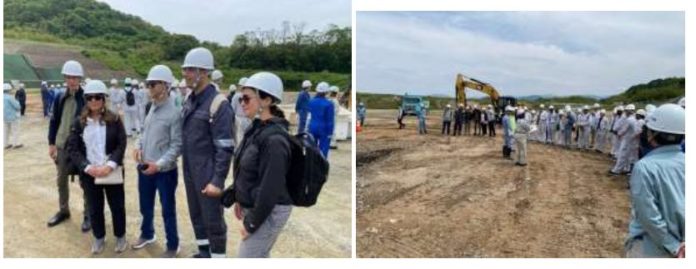
Scientists have accidentally discovered a new time marker in Earth’s chronology. While attempting to date sediments found in the Pacific, they realized that a rare radioactive isotope of beryllium was present in very high quantities.
The ocean floor still holds many mysteries. An Australian-German research team made an intriguing discovery while analyzing the seabed in the Pacific. This could lead to a shift in the way we date sediments, allowing for a better understanding of our planet’s history and the events it has undergone.
To understand this discovery, one must look at the methods used for dating sediments, bones, wood, or any other material that has endured for thousands of years, on or beneath the Earth’s surface. « For samples less than 50,000 years old, scientists turn to carbon-14 dating. This method, which has been proven since the 1940s, has its limits. To analyze older samples, other isotopes are used, like beryllium-10, » explains Dr. Dominik Koll, one of the physicists and authors of the study on Eurekalert!
Beryllium-10 Allows Dating of Sediments Older Than 50,000 Years Beryllium-10 (10Be) is a rare isotope that is not found everywhere in nature. This radioactive isotope is produced when cosmic rays collide with oxygen and nitrogen in Earth’s atmosphere. It then descends to Earth with rainfall and settles on the ocean floor. Due to its longevity, it allows scientists to date materials up to 10 million years old.
In their study, published in Nature Communications, the physicists recovered marine sediments from nearly 7 kilometers below the surface of the Pacific. Using the highly precise accelerator mass spectrometry (AMS) technique, they were able to purify the samples and discover their 10Be levels. The results surprised the researchers.
Two Hypotheses Could Explain the Massive Presence of 10Be in the Pacific « We found twice as much 10Be as expected for the period corresponding to Earth 10 million years ago. This is an unprecedented anomaly, » reveals Dr. Dominik Koll. After repeating the measurements to ensure no human error, the scientists had to admit that about 10 or 12 million years ago, a major event occurred on Earth that explains the concentration of 10Be in this part of the Pacific. Two hypotheses arise.
The observed anomaly could be explained by major changes in ocean currents around Antarctica at that time. « This could have led to an uneven distribution of 10Be on Earth during that period, » explains Dr. Koll. The other hypothesis is even more fascinating. The explosion of a star near Earth might have occurred at that time, leading to increased cosmic rays and thus an extraordinary production of beryllium. To determine if this hypothesis is correct, further surveys and measurements must be made in other locations around the planet. Regardless, the 10Be concentration anomaly will help identify common time markers between multiple sediments.



